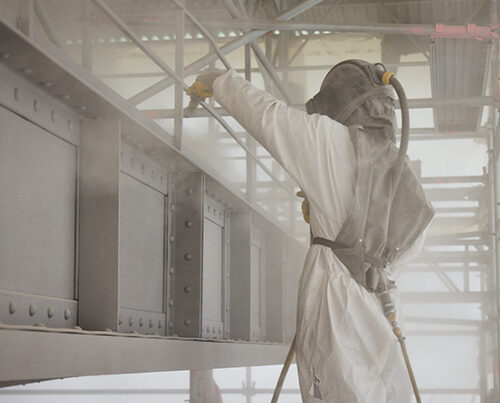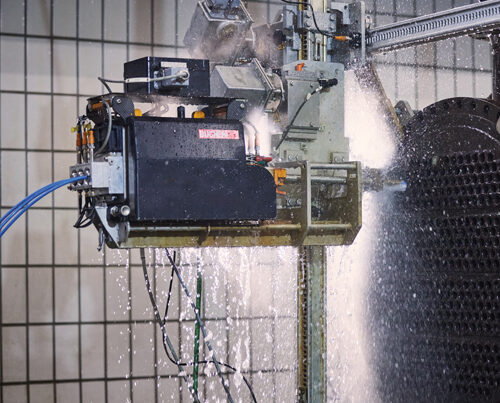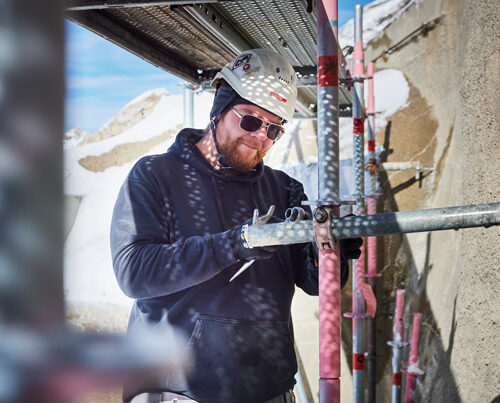Where coal was once tirelessly brought up from the depths, where muffled hammering and the rhythmic clanking of the headframe wheel broke through the silence, where miners with coal-blackened faces and overalls carried out their work: this is where visitors now go for walks – around these industrial monuments that rise up into the sky like cathedrals made of steel. The smell of oil and soot has long gone and yet the traces of time past are still there to see: brick façades, solid pieces of machinery, railway tracks leading nowhere. The Ruhr region’s industrial monuments are a part of its history as well as a symbol of the change that it has been going through.
Great importance is given to protecting these historical buildings and properties so that this cultural heritage is preserved for future generations.
So, let’s take a look at two such projects in this region ‘deep’ in the west of Germany: extensive renovation work needed to be carried out at both the Deutsche Bergbau-Museum in Bochum and the Kokerei Zollverein in Essen. Both required bespoke logistics and spectacular system and working scaffolding.
In a nutshell
History sits side by side with the future in Germany’s Ruhr region thanks to the monument preservation projects keeping the region’s industrial past alive. Whenever XERVON is called in to carry out renovation work on famous landmarks – such as the headframe at the Deutsche Bergbau-Museum and the Kokerei Zollverein – it makes the most of its technical expertise, well-thought-out logistics and its passion for such projects to ensure that these symbols of the region’s industrial culture are preserved for future generations.
“From its historical background, to its unusual shape, to its impressive dimensions – scaffolding structures like this one are simply spectacular. It is an honour to be able to carry out such projects.”
Maurice Leese, Scaffolding Project Manager, XERVON Gerüstbau, Bottrop branch
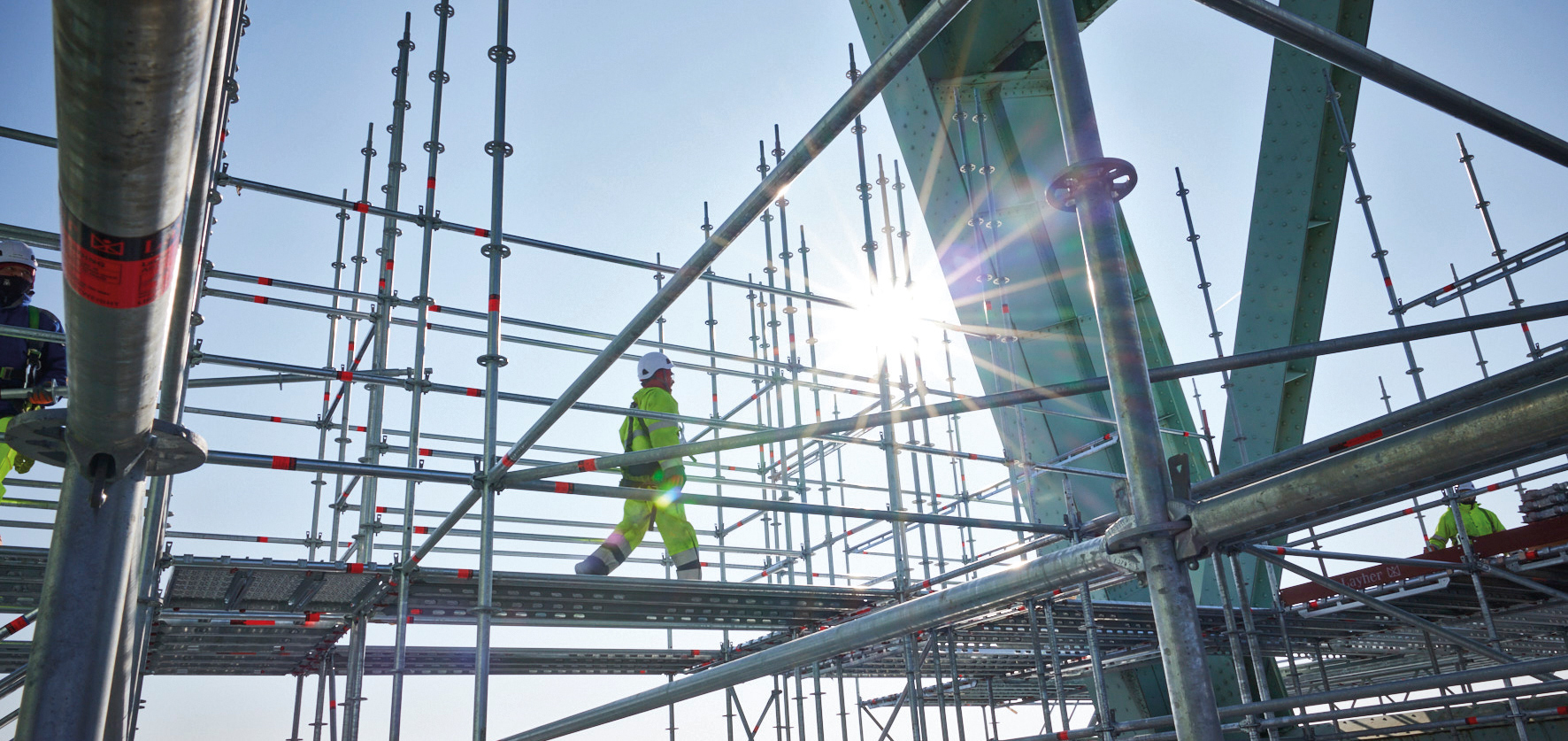
A steel giant in ‘Germania green’
Founded in 1930, the Bergbau-Museum in Bochum has dedicated itself to the region’s fascinating mining heritage and is one of the world’s largest museums of its kind. Its biggest exhibit is a 71-metre-high headframe. A steel giant painted in the traditional ‘Germania green’ colour that is well-known far beyond the city’s boundaries. This headframe used to be part of the Zeche Germania mine in Dortmund. It was moved to Bochum in 1973 where it has become a familiar feature of the city’s skyline and a popular photo spot.
An ambitious plan was put together to renovate this impressive steel structure last year: the work required to make the headframe fit for the coming years should take just twelve months. Three XERVON companies from the REMONDIS Maintenance & Services Group were responsible for carrying out the important tasks of scaffolding, surface technology and steelworks. All in all, seven REMONDIS Group companies were involved in renovating the headframe.
Scaffolding for the headframe
The team began erecting the scaffold in the spring of 2024 and, even at this stage, they had to take some special features into account. The headframe’s four supports are located in two of the museum’s inner courtyards and converge at the top – and the tower has a 16-metre-high building under it. This meant for the scaffolders that the individual scaffolds around the lower section of the supports had to be erected so that the two scaffold structures were perfectly aligned when they met above the building. Precision was required here right down to the last millimetre, especially as a steel grid made of HEB beams had to be set up in one of the inner courtyards to bear the loads.
The scaffold specialists had to follow a strict logistics roadmap to ensure the huge volumes of material reached the site without a problem. As the museum did not have the space to store all of the material needed, the approx. 750 tonnes of scaffolding material had to be delivered ‘just in time’. The routes taken by the lorries were planned to cause as little disturbance as possible for the visitors to the museum and local residents. The team used a 160t crane and a 1,500kg elevator to lift the materials above the ground.
Every hour counted to ensure they kept to the schedule. As is the case with all projects, however, the team had to cope with some setbacks in Bochum as well. Strong winds, for example, meant that the scaffolders were unable to work for several days. Thanks to their dedication though, they were able to catch up and complete their task according to schedule.
Erected using a total of 76,300 individual pieces, the scaffolding then had to be enclosed so that it was fully dustproof. They were able to hand over the 72-metre-high headframe, surrounded in enclosed scaffolding, to XERVON Oberflächentechnik’s team of surface technology specialists on time, exactly as planned, in the middle of April.
“Renovating and restoring industrial monuments is one of our specialist areas of expertise. We have the skills to make the most of modern technology while taking all the special features of protecting monuments into account.”
Hendrik Stammler, Surface Technology Project Manager, XERVON Oberflächentechnik, Bottrop branch
Protected against corrosion for several decades
The stepped enclosure covered 34 floors of scaffolding – the workplace of XERVON’s surface technology specialists. They spent the next few months, from April to early autumn, applying a high-performance corrosion protection layer to the headframe. Add together all the individual elements of the headframe, then they had to work on a surface area of around 10,000m². All in all, they used approx. 10 tonnes of coating material and sealant.
The team’s first task was to remove the old coating, including any corrosion and deposits, using compressed air blasting technology. Around 500 tonnes of solid blasting media were required to complete this work. The blasting media was effectively circulated to prevent there being too much weight at the actual workplace: compressors continuously transported the media up the scaffold where it was immediately vacuumed up during the blasting work and conveyed back down to the ground again. Once this had been completed the coating experts then applied a new, multi-layer coating to the steel structure using spraying equipment before adding a final coat of the well-known ‘Germania green’ paint. Heating and ventilation equipment were also installed in the various workplaces to ensure the environmental conditions were kept at the required levels throughout.
As there was limited space in the inside of the enclosed scaffold, most of the technical equipment had to be placed at the foot of the headframe. This meant that sandblasting tubes, control cables and other feed pipes and cables had to be installed over long distances when the building site was set up; some of them were over 600 metres long.
An expert team
As soon as this work had been completed, the scaffolding specialists moved back in to dismantle the 39,000m2 of system and working scaffolding. Despite the tight schedule and the huge scale of this project, the renovation work went according to plan. A success that can be put down to the ideal way the services delivered by all the different specialists were dovetailed.
Whenever required, the scaffolding and surface technology experts turned to other REMONDIS Group firms for assistance. XERVON Instandhaltung’s maintenance specialists, for example, replaced the sections of the headframe’s steel structure that were badly corroded. BUCHEN UmweltService made sure the working areas were clean before the work was carried out on the steel surfaces. BUCHEN EnergyServices supplied the compressors for transporting the blasting media. Further REMONDIS companies provided additional help, such as REMEX which specialises in recycling mineral materials. It was responsible for collecting and processing the used blasting media.
Scaffolding for the Bergbau-Museum Bochum. Further impressions in the video
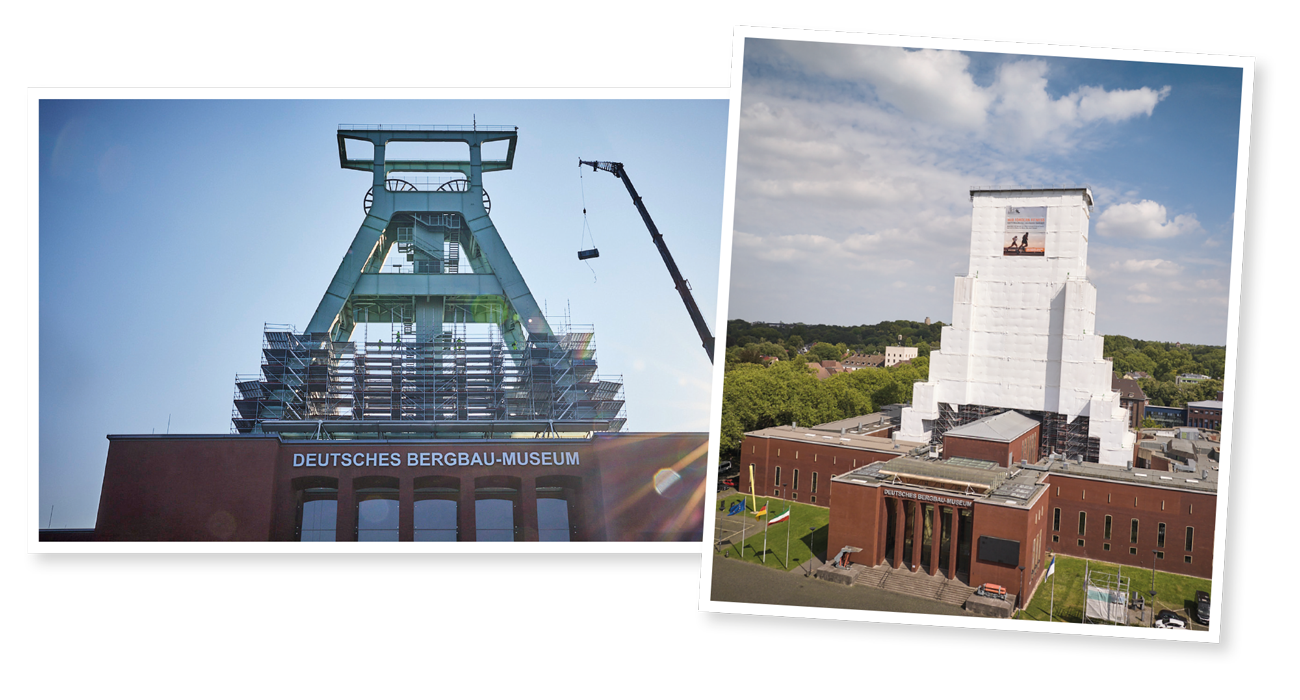
The ca. 200m-long, 22m-high and 3.5m-wide scaffold stretching through the inside of the listed coking plant was inch-perfect.
A bespoke solution for a UNESCO World Heritage Site
“The Ruhr region’s prettiest colliery”, “A technological marvel”, “An industrial cath-edral” – practically every superlative around has been used to describe the Zollverein coal mine and coking plant in Essen. Following the closure of the coal mine in 1986 and the coking plant in 1993, this site was gradually renovated and redeveloped to give it a new lease of life. Today, the Zollverein is a well-known architectural and industrial monument and enjoys special legal protection after being named a UNESCO World Heritage Site in 2001.
This coking plant – once the biggest in Europe – used to transform coal into coke in its 300+ furnaces. At its centre is the quenching station – a building with railway tracks running through it and walls covered in a whole array of attachments and pipes. It is not possible to simply set up scaffolds against such walls. On the contrary, they have to be carefully modified so that they fit around any obstacles and additional fittings or extensions perfectly. XERVON Gerüstbau uses state-of-the-art technology to achieve just this: the geometry of the building was scanned with laser technology and the scan’s results used to create a three-dimensional plan of the scaffold structures.
Scaffolding inside and out
In practical terms, this meant erecting a ca. 4,500m² façade scaffold around the outside of the building. One particular challenge here was an almost 80m-long, tiled coke chute that crossed part of the wall and was able to bear very little load. Unable to mount the scaffold on the chute, XERVON set up a bespoke hanging scaffold for this section of the façade instead. This was then anchored into place via an auxiliary scaffold erected inside the building.
Three interior scaffolds – each around 8,000m² – were needed to enable the renovation work to be carried out inside the building. They were designed so that the work platforms spanned the former bench level. This is effectively a covered gallery that is about four metres above the ground and runs along the whole of the wall. At the same time, an area of ca. 3.5 x 4.5 metres had to be kept clear above the railway tracks running through the inside of the quenching station. Last but by no means least, the team also had to come up with a bespoke solution for the logistics because lorries were unable to access this long building. And so the experts built two wagons from pieces of scaffolding and used the old railways tracks to transport the material – a quick, efficient and ergonomic solution.
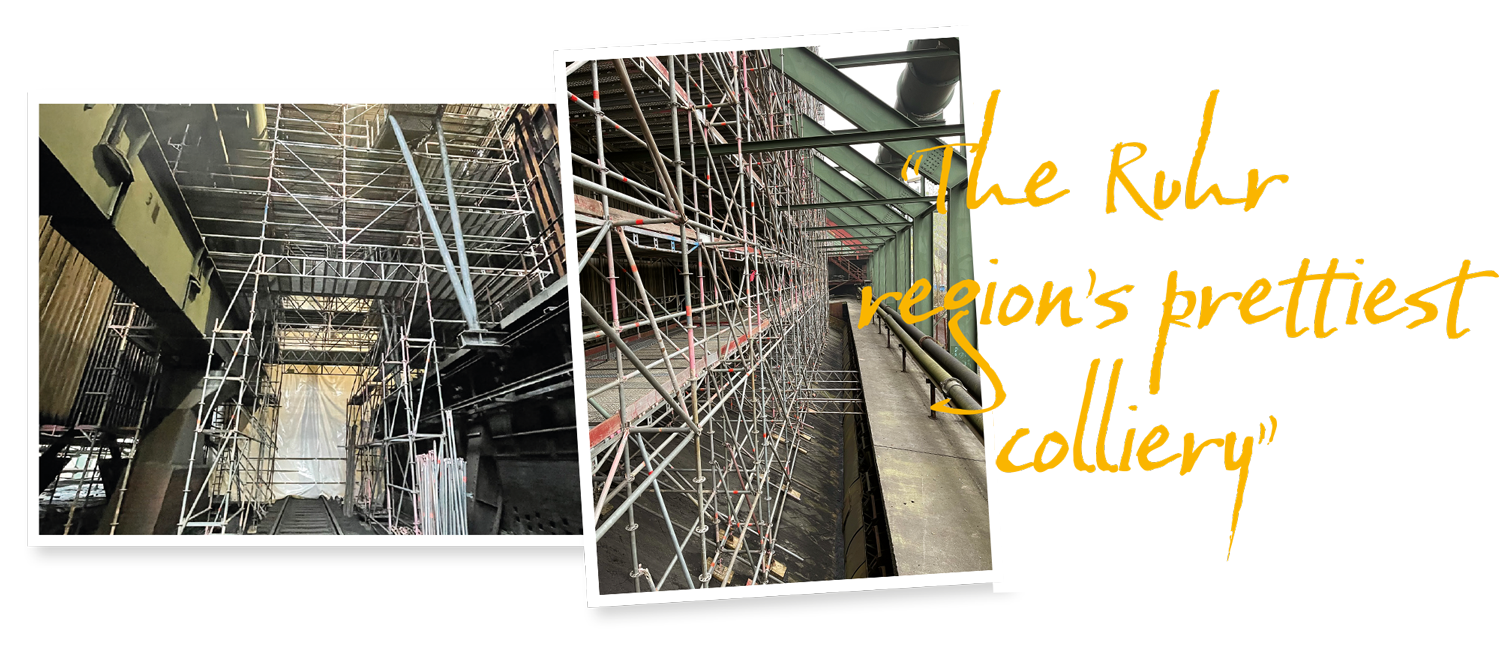
Scaffolding for the Zollverein’s coking plant. Further impressions in the video
A region undergoing change
The region between the Rhine and Ruhr rivers is gradually being transformed. New working environments are replacing coal mines and steelworks and these well-preserved treasures of the past can still be visited in many of the region’s towns. These renovation projects in Bochum and Essen will certainly not be the last – industrial monuments will always need to be cared for and maintained.
Image credits: Image 1: Adobe Stock: reeel; image 2 – 6: © XERVON









